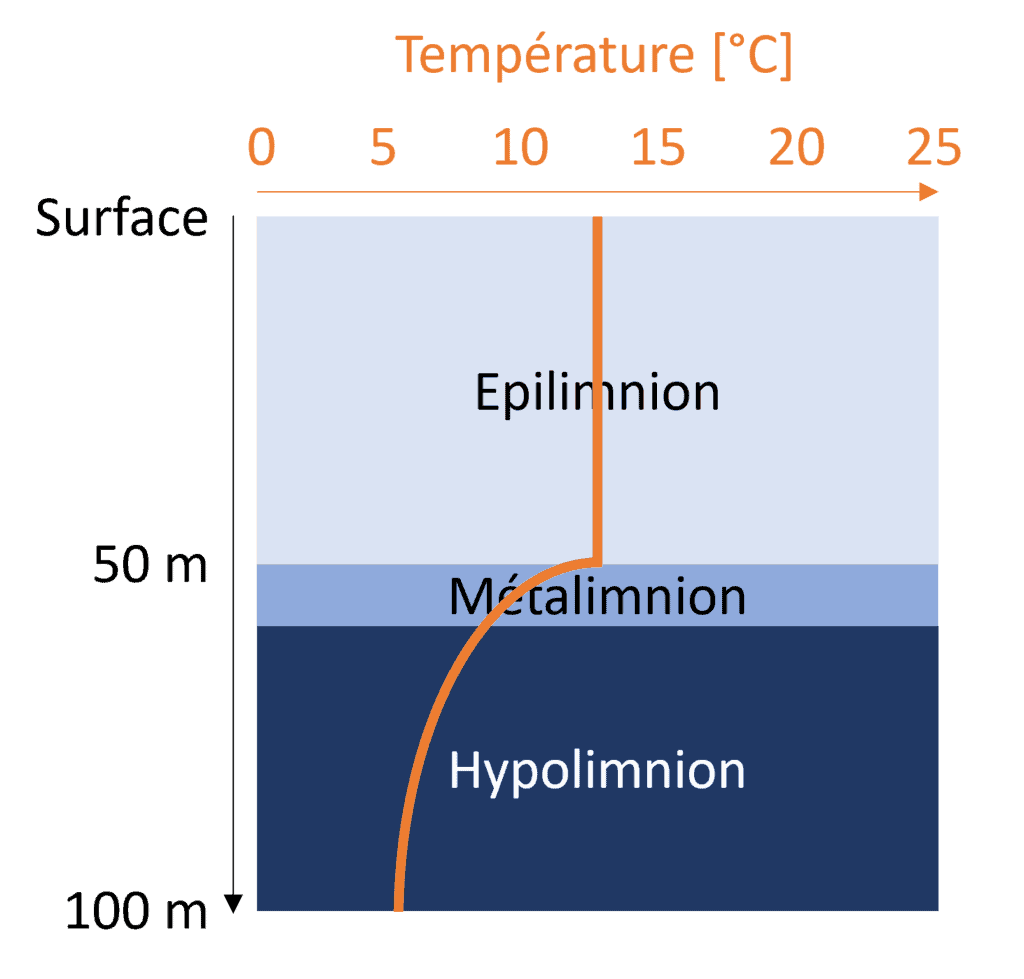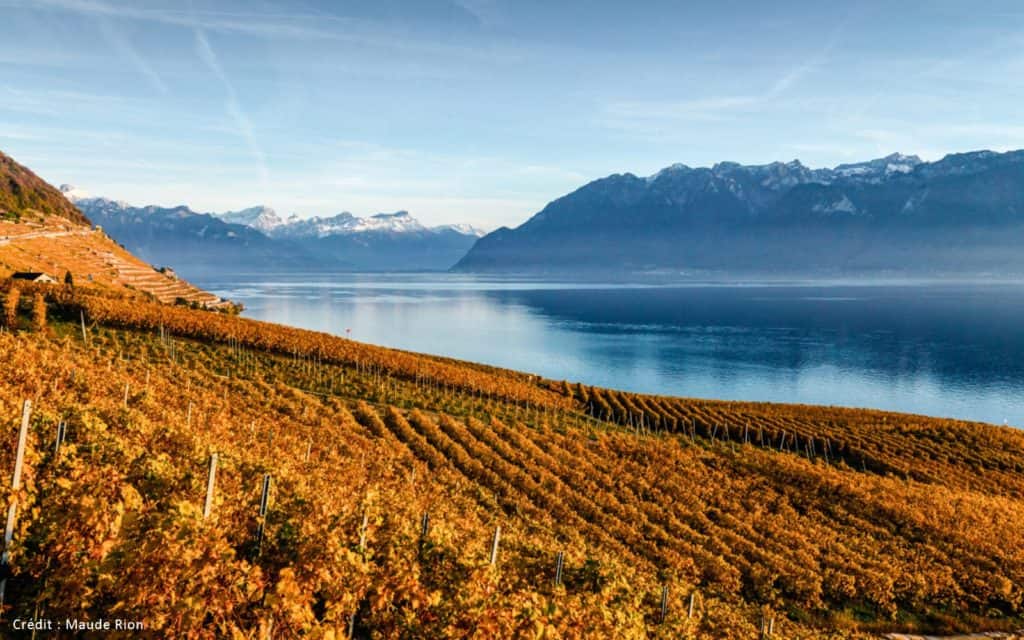
Le Léman en automne
Refroidissement et fin du développement algal
En automne, le lac reste divisé en 3 couches d’eau superposées : l’épilimnion (chaud), le métalimnion (tiède), l’hypolimnion (froid). La baisse de la température de l’air et le raccourcissement de la durée du jour entraînent un refroidissement de l’épilimnion qui se mélange avec le métalimnion.
Le développement estival des algues en suspension dans l’eau a entraîné, dans l’épilimnion, une baisse de la teneur en nutriments nécessaires à leur développement (azote et phosphore principalement). Le métalimnion étant plus riche en nutriments que l’épilimnion, le refroidissement automnal remobilise des nutriments vers la surface, et cette remobilisation permet aux algues de continuer à se développer. Plus il y a d’algues, moins les eaux de surface sont transparentes.
Les algues sont importantes pour le fonctionnement du lac car elles constituent la base de la chaîne alimentaire. La majorité d’entre elles ne pose pas de problème, mais certaines espèces sont problématiques : celles qui colmatent les filets de pêche, et les cyanobactéries toxiques.
Quand les algues meurent, elles sédimentent en direction du fond. Leur décomposition au cours de la sédimentation consomme de l’oxygène et abaisse la teneur en oxygène dans l’hypolimnion.
La température des eaux du Léman en automne
En automne, le lac reste divisé en 3 couches d’eau superposées. Une couche de surface quasiment homogène en température (épilimnion), en-dessous une couche où la température diminue rapidement quand la profondeur augmente (métalimnion), et plus en profondeur une couche relativement homogène en température et froide (hypolimnion). La baisse de la température de l’air et le raccourcissement de la durée du jour entraînent un refroidissement de l’épilimnion qui se mélange avec le métalimnion. Le refroidissement automnal se caractérise par un épaississement de l’épilimnion allant jusqu’à environ 50 m de profondeur.


Newsletter
Abonnez-vous à la newsletter trimestrielle de la CIPEL qui fait état des derniers résultats d’analyse du lac et des actualités de la CIPEL.

Bulletin limnologique
Découvrez les dernières données de mesure de température, de transparence de Secchi, de turbidité et de concentration en chlorophylle a, ainsi que leur évolution.









